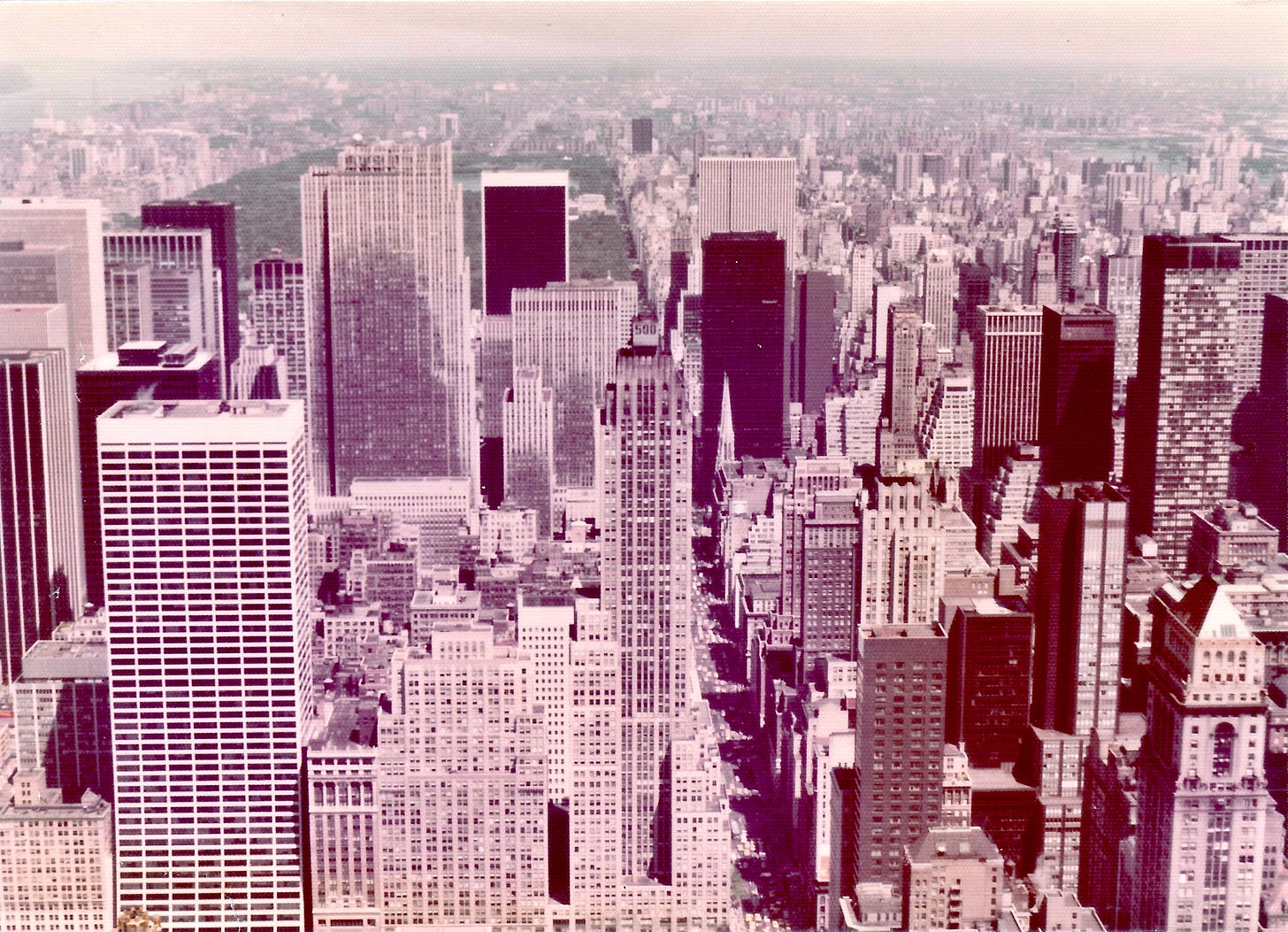Remember When New York City Almost Went Bankrupt?
An interview with historian Kim Phillips-Fein about the last recession
I don’t know if you have been paying attention, but my beloved New York City is in kind of a bad way right now, while inflation is giving Democrats the heebie-jeebies about whether Joe Biden is the new Jimmy Carter. But things have been worse!
If you know someone who would be interested in knowing more about why New York is so dependent on real estate to pay the bills, and how Donald Trump rose from the ashes of the city’s debt, please:

NYU historian Kim Phillips-Fein’s book, Fear City: New York’s Fiscal Crisis and The Rise of Austerity Politics (Metropolitan Books, 2017) tells a complex story of an iconic moment in the so-called “urban crisis” of the 1970s, in which cities no longer seemed economically sustainable. Her keen attention to the interrelation of finance and politics – a preoccupation also at the center of her first book, Invisible Hands: the Businessmen’s Crusade Against the New Deal (2009), helps us understand some of the tensions of our current moment. The privatization of public services; wooing corporations with tax cuts that expand the tax burden on working citizens and homeowners, subsidizing developers, and financing public higher education through tuition revenue are but a few of the financial principles that can be traced back to the 1970s. New York’s months of teetering on the edge of bankruptcy in 1975 became both a cautionary tale about financing a public sphere that supported the aspirations of all citizens, and it became a moment when the techniques associated with modern neoliberalism were invented and first implemented.
Claire Potter: Mid-century New York City was a laboratory for a proto-socialist urban vision that was consistent with American democracy, and that city services – education, parks, and transportation – enacted a robust vision for public life between the 1930s and the 1960s. But by the late 1960s, that vision was failing. What were the elements of that failure?
Kim Phillips-Fein: I’m not sure that it’s right to describe New York as a proto-socialist urban space, even in the postwar years! This is the home of Wall Street, after all. And even during the 1940s, 1950s, and 1960s, New York remained a deeply unequal city, both racially and economically.
But what I was struck by is just how extensive and ambitious the city’s public sector was in the years after the New Deal and until the 1970s. We often think of the post-war “affluent society” in a very suburban framework, what Lizabeth Cohen calls the “consumers’ republic.” We think of New York as a city of private ambitions and entrepreneurial dreams. But in truth, the city’s public sector—its subways, its libraries, its museums, its parks—have always constituted a major part of its appeal. In a way, New York embodies an urban version of the vision of postwar liberalism, in which the “good life” includes upward mobility within an urban community that includes access to culture, art, and higher education.
By the late 1960s, this vision was fracturing. The city’s public services were growing strained as its finances were coming under increased pressure. A serious recession gripped the city in the late 1960s, leading to the loss of hundreds of thousands of jobs. The new jobs being created tended to be in the service sector and didn’t pay as much (or generate as much income for the city) as the old industrial jobs did. New York’s population shrank by about 10 percent over the 1970s, and most of the people leaving were white and middle class. In 1940, the city’s population was more than 90 percent white; by 1980, it was only 60 percent white.
At the same time, the civil rights and black freedom movements led many people of color in New York to protest the inferior services in their neighborhoods. The result was increased demand for city services at the very moment when the city was losing the ability to pay for them.
With different federal policies—for example, ones that had not subsidized the outflow of people to suburbia, or trade policies that had not made it easy for the garment industry (and others) to relocate to other, low-wage countries—New York might have been in a very different position. As it was, the city was in a serious bind. And New York’s mayors, first John Lindsay, then Abraham Beame, turned to short-term debt instead of attempting to address the underlying inequities.
CP: For almost three decades, the city government insinuated itself into the daily lives of its citizens, and the many services New York provided came to be regarded as rights. What were these rights, and how did they become visible when cutbacks were implemented during the financial crisis that peaked in 1975?
Keep reading with a 7-day free trial
Subscribe to Political Junkie to keep reading this post and get 7 days of free access to the full post archives.



